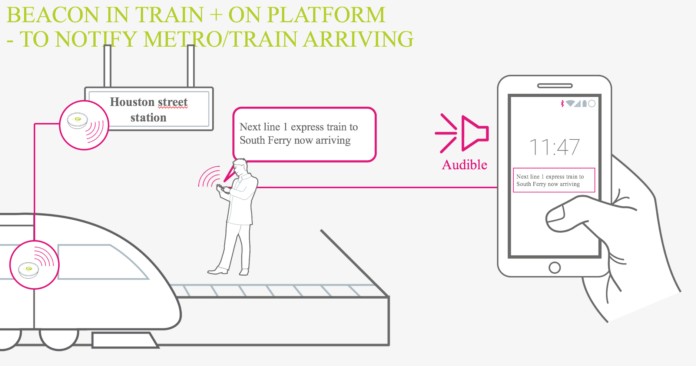AUSTIN, Texas – Smart city deployments come in many forms, with one of the most simple methods of imbuing a physical object with connectivity and interactive access being a contactless beacon.
Connecthings, founded in 2007, is looking at contactless beacons – think QR codes, NFC, Bluetooth – as a way to make cities more user-friendly.
Ron Espinosa, VP of sales for Connecthings in the U.S., highlighted some key smart city use cases for contactless beacons.
Imagine walking up to a bus or train stop, Espinosa said, and receiving a notification from the city’s transport department, for example, that alerts you to the time of the next train or bus. To take it one step further, the city’s platform, using the Connecthings network, could recommend alternate, faster options.
That’s the convenience aspect. Now, for accessibility, consider a visually impaired individual in the same scenario. Instead of a text-based notification to the smartphone, the same information could be transmitted as audio.
Beyond the transportation angle, beacons could be used to provide access to city services or tourists could get information about cultural or historical sites as they move through a city.
Espinosa said that as Connecthings moves into the U.S. market, it is working with the cities of Austin, San Francisco and New York.
“The really interesting thing about ConnectThings, we’re a [software as a service] provider. We lovingly call it a beacon platform. We do provide hardware because most people don’t have it, but the platform is hardware agnostic.”
He also stressed that the platform can be opened up and third parties given access to the Connecthings software development kit for new levels of service integration.
“There’s an opportunity here to leverage the mobile infrastructure that sits in everybodys’ pockets,” Espinosa said. “It’s just a dumb piece of equipment, or a dumb sticker. Once the beacons are put in the field, the only thing you have to do is change a battery if you went for the battery option. Put up a new sticker if someone tore it down.”

Exploring the role of contactless beacons in a smart city
ABOUT AUTHOR
